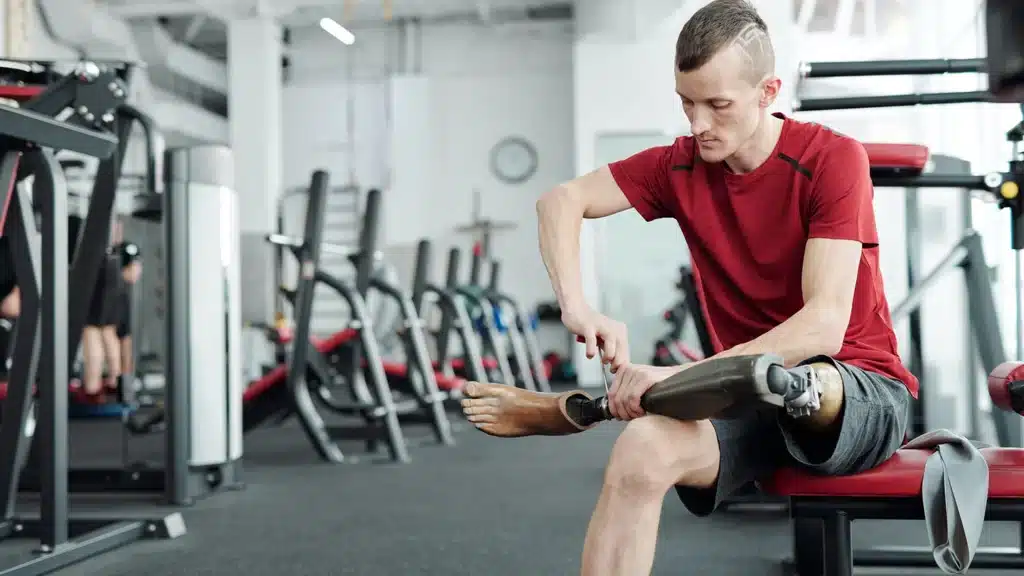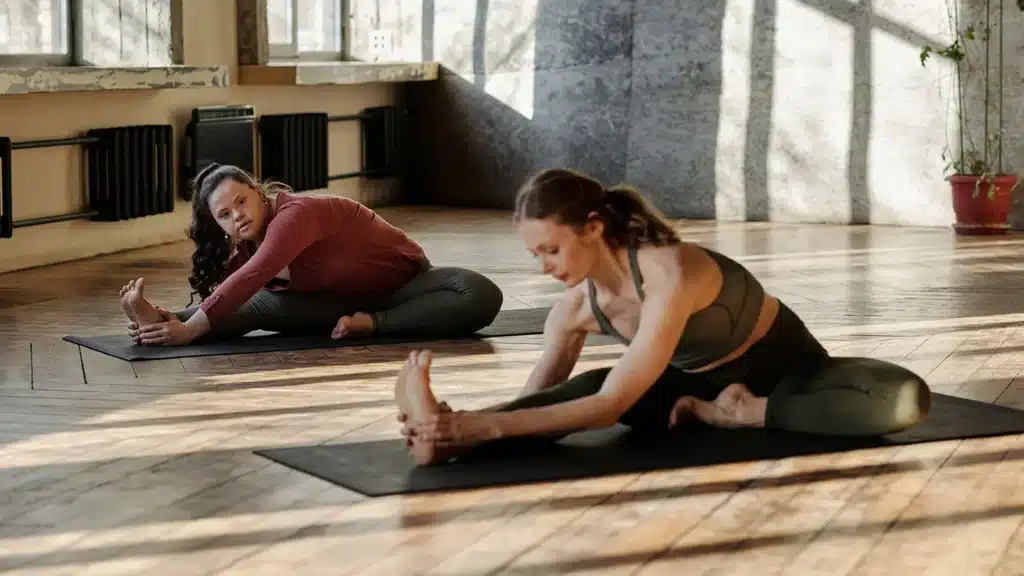
2022 has been… something else. Just as we were starting to see ‘business-as-usual’ membership numbers after pandemic lockdowns, the energy crisis is now hitting gyms hard. A recent survey showed that 39% of people are already finding the increased cost of living is impacting their ability to be active, and many are considering showering at the gym instead of at home to save money, leading to higher energy bills for operators over the winter.
On top of this, Covid changed the face of the fitness industry and businesses are still having to adapt to ensure their ongoing survival. The population is more aware than ever of the importance of exercise after many months locked inside with limited access to exercise spaces and equipment, so online fitness has become a seemingly permanent fixture in the industry as a result.
In this new age of fitness, and with rising energy costs becoming increasingly difficult to manage, fitness businesses will have to think differently to survive – such as integrating fitness technology and thinking about inclusive fitness methods. Gyms need to find ways to maintain cashflow positivity while keeping their facilities accessible for members, making the most of the rising trend for virtual fitness classes, and being economical with their energy usage.
Here are some ways the fitness industry is navigating these challenges.
1. Improving Engagement Levels via Online Fitness

Public interest in fitness is on the rise with 82% of consumers stating they exercise regularly or intend to start soon. However, there is actually about a 60:40 split between people wanting to work out in gym spaces vs at home, showing a significant increase in interest in online fitness workouts.
Leisure centres might make the most of these changing consumer behaviours by utilising fitness technology and offering multi-platform options that extend beyond their physical space.
Martin Franklin, Europe CEO of Les Mills states that ‘The ability to reach beyond your existing membership and attract fresh faces into facilities will be key to long-term growth; a welcoming force and establishing routes for beginners to find intrinsic motivation to exercise, will be key to their long-term adherence.’
One way to do this is to increase your offering beyond traditional gym classes with access to virtual options, such as online fitness classes offered by content providers like Les Mills, FIIT and more. You could take this opportunity to re-engage people who have memberships with you but rarely use them.
Remind them why they joined in the first place and what you have done since then to improve your services. Help them better understand the value of their membership so they don’t see it as an expendable cost.
If you want to see how a hybrid offering like this might look, check out how the Gym Group partnered with Fiit, the #1 rated fitness app, to provide a unique offering to their members with online fitness, as well as in-person classes.
2. Improving Sustainability with Fitness Technology
Younger members, who currently make up about 48% of global consumer expenditure, are more concerned about sustainability and ethics than other demographic groups.
Organisations across all industries are considering their environmental impact and are making more serious commitments to sustainability with their business choices, and the fitness industry should take note.
Finding ways to reduce energy usage in your facilities has the double impact of improving your sustainability credentials and also saving money during a time of soaring energy prices. Small changes such as using LED lights instead of halogen throughout your building and installing automation for virtual fitness classes to stop projectors, screens and lights running when the studio isn’t being used can make a big difference to your overall energy use.
You could also look to fitness technology such as environmentally friendly equipment options like Energym RE:GEN Studio exercise bikes. These exercise bikes capture the power generated by an indoor cycle workout and send it to a central lithium-ion battery, storing that energy until the gym is ready to use it, helping to offset a gym’s energy usage.
The amount of power generated depends on several factors, including the number of exercise bikes installed, the intensity of the class, and the number of classes per day, but as a general estimate, one gym could provide enough energy to power 7.8 households per day (at 9kWh per household, ONS 2017).
Energym CEO Will Flint says “We recently worked with Hutchison Technologies on a large-scale installation at STORM, a Holmes Place Cycle Studio based in Berlin. This studio boasts 42 bikes and runs 5 classes a day. Feeding the energy generated by these classes back into the facility is expected to save 5.4 tonnes of CO2e per year for the studio or 37.5 tonnes of CO2e over the expected lifespan of the bikes. While the numbers vary on the country’s energy grid efficiency, it’s an incredible saving for the studio and should be considered be a game-changing solution for many similar studios in the UK”
3. Rethinking Under-Utilised Fitness Spaces
Many gyms have large areas of floor space that are not being utilised to their full potential. While these could be shut off to the public in an attempt to save further heating and lighting bills, they could also be turned into more profitable and engaging spaces.
Areas such as squash courts or other sports hall spaces might not be getting booked as often as they once were, so leisure centres should think outside the box when it comes to managing them. Similarly, underperforming studios that run only 2-3 classes a day could be reinvented to serve a wider variety of members throughout the day.
Technology such as the Multiball Squash Court Conversion can breathe new life into under-utilised spaces. With its interactive fitness technology, one space can be used to host multiple different types of fitness disciplines from kids’ games, to HIIT classes, cycling, and yoga without losing traditional squash capacity. Smart lighting and audio integrations allow the space to be transformed to suit the user’s needs with just the touch of a button, making it accessible for gym-goers of all ages and abilities; from kids to athletes and pensioners.
Integrating fitness technology like this at your facility allows you to make the most of the rising demand for online fitness classes, create a more accessible space for users, and even support community initiatives by more easily by hosting events like kids’ cinema days, charity events and more.
4. Partnering Fitness and Health

Another opportunity for leisure centres and fitness facilities is to partner with local NHS providers to offer a more comprehensive health delivery service. Initiatives like Integrated Care Systems, which have come into legislation this year, are a great way to get the wider population into leisure centres and create more positive associations with fitness spaces.
The NHS has a long waiting list for medical treatments, so they are looking to tap into local alternative resources to help support patients wherever possible. This can span from simple exercise routines to specialised physio and recovery treatments.
Estimates indicate a potential resource of 50,000 technically competent and highly skilled individuals across the UK who have condition-specific qualifications which could support the NHS. Funding to cover certain services is available to operators wanting to work more closely with the NHS.
So in addition to the funding received, participating operators also open their doors to a demographic who might otherwise never have considered joining. All of these are opportunities to boost your finances as well as create a tight-knit connection to the local community and build a more resilient business.
5. Integrating Inclusive Fitness

Finally, perhaps the most important thing any leisure centre or fitness space can do to ensure its longevity is to invest in inclusive fitness, improving accessibility.
From considering the language you use in your marketing, to installing machines that can facilitate bodies of all sizes and abilities, you should work to address your own biases and make your gym a more welcoming space for all.
Consider whether you have the ability to build ‘privacy zones’ or ‘quiet zones’ for those who feel self-conscious about working out on the main gym floor, or struggle with sensory overload. Expand your class offering to include timeslots for those new to exercising at a gym, and inform all new members during induction of these additional benefits they can take advantage of so everyone feels your facility works for them.
One of the largest neglected demographics for fitness in the UK is pensioners. Only about one in four people above the age of 65 regularly exercise, despite the many benefits that being more active can bring to their general health and well-being.
By focusing on making leisure centres and gyms integrate inclusive fitness, making the gym an accessible place for all, operators will widen their customer base, create customer loyalty and improve the likelihood of weathering crises such as the Covid-19 pandemic or current energy crises.
To learn more about how your fitness centre can use health & fitness technology to think outside the box and build longevity, speak to a member of the Hutchi team today.